Starting a Body Music Festival in Serbia
BY ANA VRBASKI
Photos by Alisa Dinjaški
Note: This essay was first published in Stance on Dance’s fall/winter 2023 print issue. To learn more, visit stanceondance.com/print-publication.
The New Balkan Rhythm Festival is a novel initiative in Serbia: a combination of dance, movement, and music on the soil of Vojvodina, a multicultural region in the north of Serbia.
The festival was launched as a love child after Marko Dinjaski and Ana Vrbaski went to Hamburg to the Body Rhythm Festival in 2018. Marko and Ana are the body music and theater duo behind Alice in WonderBand. Marko shares, “The idea was born there and then, in Germany. When we saw that hundreds of international participants exchanged smiles and danced and made music together, sharing passion for the form, it felt we belonged. We wanted to create a similar community in Serbia.”
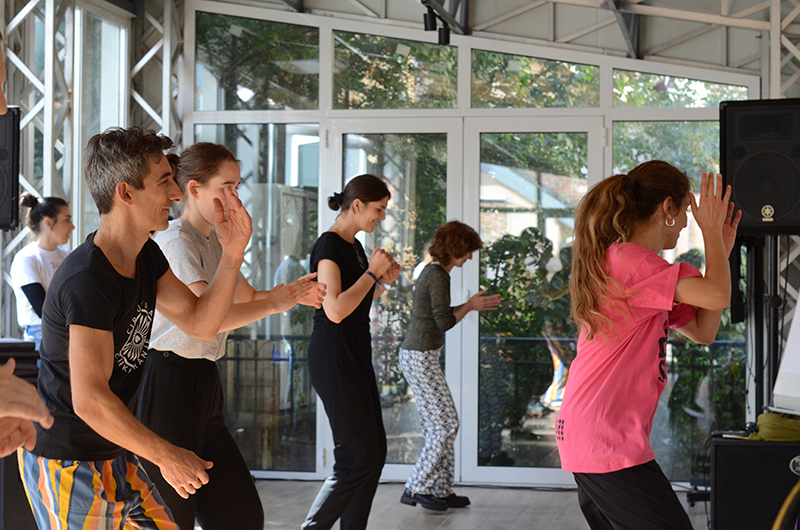
What exactly is body music? It is the oldest performing art, since our bodies were our first instruments, but also a contemporary form of expression. It roots itself in tradition, and there are so many around the world: hambone in North America, capoeira in South America. Other examples include Afro-Cuban dances connected to Santeria or Roma dances from the north of Hungary.
The fascinating fact that this way of expression in music and dance has so many different variants all over the world was a starting point to name the New Balkan Rhythm Festival. The Balkans are a mix of nations and traditions, a big primordial soup with lots of different spices. The festival brings together Catalan, Afro-Cuban, and South American traditional and contemporary artists to teach and perform for people from all over the world. Participants make new friendships, contacts, and meetings of cultures.
Ana and Marko are pioneers in body music in Serbia and the ex-Yugoslav region. They started in 2013 with workshops for kids. In time, they have worked with different age groups, including people with hearing problems or sight disabilities. In parallel, they developed theater shows and concerts incorporating body music and movement as two main ways of expression. “We are actors and musicians, but people in the region consider us dancers, because movement is the primary part of making music with the body,” Ana says.
The first New Balkan Rhythm Festival happened in 2022. “It took us three years to do it. We were writing projects, finding partners, developing ideas, and gathering a team of people. The first year was rough, especially because we didn’t get funding from the government calls for cultural projects. We turned to the community and organized a crowdfunding campaign. We gathered basic funds for the accommodations and travel of the international teachers. This felt like a miracle and gave us strength to persevere.” Marko says. “Teaming up with a small ecological cultural center with a hostel in the unique historical town of Sremski Karlovci gave us a base for the workshops and accommodations. The local tourist office understood this concept of cultural tourism, where international participants can savor the local culture and cuisine, while enjoying the intense work on the body and mind.”
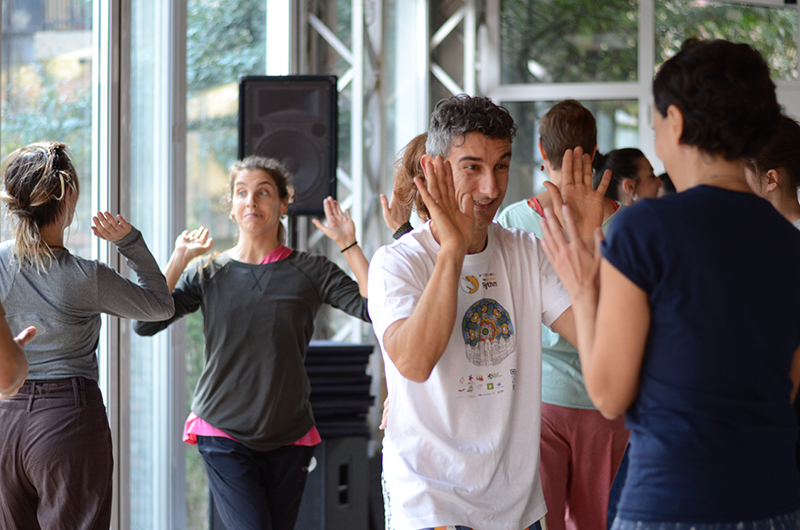
The location of Sremski Karlovci was just perfect, on the bank of the Danube River and in between the cities of Novi Sad and Belgrade, which puts it close to an international airport. The town is beside the national park of Fruška gora, the biggest of the few mountains that overlook the Pannonian Plain.
The teachers at the festival are quite an extraordinary group of people.
Elena Hristova is a singer from North Macedonia. She is the leader of the music group Baklava from Skopje. Many know her by her participation in other projects and groups, such as famous Turkish psychedelic ethno-pop group Baba Zula, Backyard Jazz Orchestra, Biscopia, and many other collaborations with musicians from all over the world.
Anna Llombart is a choreographer, tap dancer, and body percussionist from Barcelona. She goes from performing with her group Woodbeats and producing their work to teaching in Spain and abroad at schools and festivals. She explains her practice of embodying the music: “In general, my workshops are focused on being the rhythm instead of only following the music randomly. When I’m working with contemporary dancers, I like to make them aware of the inner pulse and how to use it to create movement through rhythm as well as being tight to the pulse as a solo dancer or as a group. I invite the students to be really aware of the music they are making while moving.”
Ben Schuetz transformed from being a classically trained drummer to a body percussionist, performer, and teacher who explores the music and rhythms of Latin America. He is the godfather of the New Balkan Rhythm Festival, for he is the founder of the Body Rhythm Festival in Hamburg. “We were impressed with the whole concept of the Hamburg festival and wanted to transpose that onto Serbia. We are literally copying it, from A to Z,” says Marko with a smile.
Max Pollak is one of the most important figures in contemporary rhythmic dance. Max is a jazz musician, drummer, singer, tap dancer, performer, teacher, composer, and explorer of the diverse inheritance of Afro-Cuban culture. He is also proficient in yodeling. He is an Austrian who has been living in New York City for more than 20 years. He performs with some of the legends of jazz music and is a little bit of a legend himself.
“Bringing Max to Serbia felt like a dream. The important thing is that all these star artists are such good-hearted humans, in love with the art and so happy to share it with all the participants of the festival,” Ana says. “The humility and the human face of the festival is very important to us. We want it to be open to everyone and endorse the dancers and musicians, as well as people who have never been in the performing arts. We want to build community and connect people.” In the first year of the festival there were people from seven nations and 12 cities.
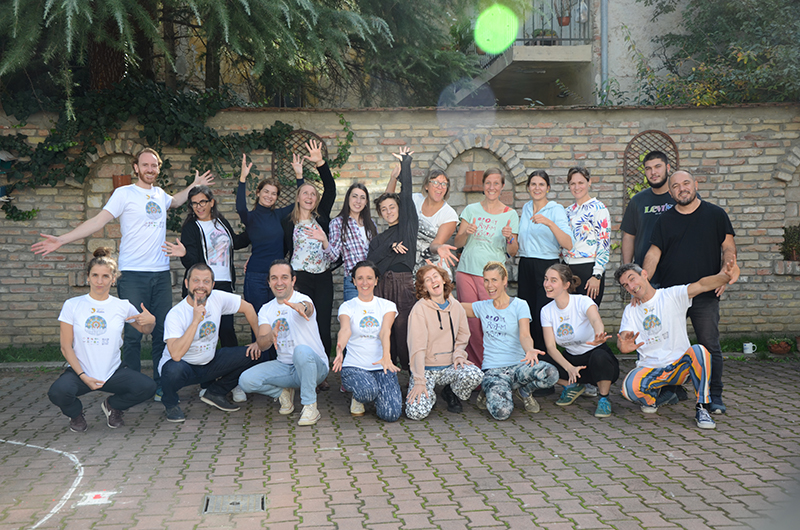
Staying together at the hostel and sharing meals brings the participants closer together. It is as if the participants gain a new artistic family for three days. The work is very hard: moving, turning, singing, and making sound with the body and with the group. It brings great joy but is also overwhelming sometimes.
As one of the workshop participants from last year put it: “It was a very inspiring, intense, and heartwarming festival. I found the teachers as well as the other participants very welcoming, open-minded, and open-hearted, all together creating a strong and supportive community spirit.” Another commented: “It was a wondrous escape into self-exploration, music, rhythm, and much more. Words cannot fully describe the feeling of elation and the sense that we had traveled somewhere far.” One of the teachers commented: “Lots of inspiration, discovery, deep learning, connecting, and hard work.”
The balance is made by the time for fun. “The town of Sremski Karlovci is a very good spot for the festival because it has a good atmosphere, everything can be reached in an easy distance, and it offers a lot of leisure activities,” says one of the participants. Strolling through the 18th and 19th century scenery of Austro-Hungarian heritage brings yet another flavor to the stay in the north of the Balkans. In this spot where the Turks were stopped on their way to Northern Europe by the joint forces of Serbs, Hungarians, and Austrians in the war between Austria and the Ottoman Empire (1716 – 1718), history and tradition can be found on every corner. Famous for wine cellars and rakia (brandy) making, the place has had a bohemian reputation for centuries. Participants enjoy the local tamburitza orchestra and the traditional music from Vojvodina with some of the teachers.
The concept of the festival is body rhythm workshops from morning to evening, 12 in total, and concerts at night. “Last year we had three concerts plus presentations of the workshops. It was really hard work to organize and seemed a bit too much because every second was filled with events. This year we decided to focus more on the process than the outcome. For most of the workshops, participants can just drop in. The underlying philosophy of body music connects all the events, but you can just enjoy it, even if you’ve never done anything like it,” says Ana.
The teachers are the bearers behind the body music concept. “I am not really attached to any specific style of art. To me there is only music and art. I try to not limit myself, not to see the boundaries and separate the genres,” Max Pollak says.
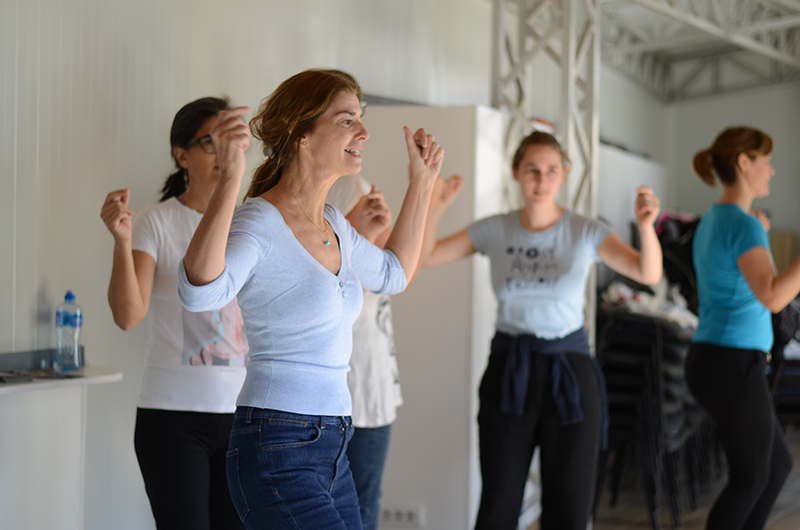
“As a drummer, it was a bit boring to always be with the same people, musicians, playing gigs, teaching in music school. The body percussion scene is so much more colorful and diverse. There are dancers, singers, all kinds of artists, and I am very inspired by that scene. When I am creating, I am thinking of rhythms and songs that are fun to play and share.” Ben Schuetz shares what motivates him to be in the body music scene.
“My dancing style is a mix. I started tap dance and contemporary dance at the same time. In contemporary dance, I missed the rhythm as a dancing partner and in tap dance I missed the plasticity of the whole body moving in an organic fashion. Then body percussion arrived to mix these two ideas. It allowed me to dance to the rhythm not only with my tap shoes but with the rest of my body and allowed me to move with more freedom. I also have a tendency for storytelling in my pieces,” says Anna Llombart about her dancing style.
“It took courage to bring these people together and create a festival like this in Serbia. Most of the festivals here are about listening to your favorite bands and getting wasted. The educational component is mostly merely cosmetic,” says Marko. “There are some festivals like ARLEMM in Arilje that are focused on classical music. Also, independent productions organize workshops of physical theater or butoh dance, but nobody combines making music and dancing.” “There are no other festivals that genuinely intertwine acquiring knowledge and performing,” Ana adds.
The second New Balkan Rhythm Festival was held from August 25th to 27th in Sremski Karlovci, Serbia. “We want to be open and keep experimenting with the frame we have. The times are always changing, and the needs of the participants, audiences, and teachers change as well. The most important thing for us is to stay present, focused, and make more wonderful new art and connections between cultures,” says Ana. “We believe that is the only way to stay alive – and sustain,” Marko adds with a smile and a wink. And the name of the festival corroborates it: it is the New Balkan Rhythm Festival.
Chorus of the festival hymn:
“We need something new
To connect the world
To dissolve the borders
Of any new orders
Let’s speak without words
New Balkan Rhythm”
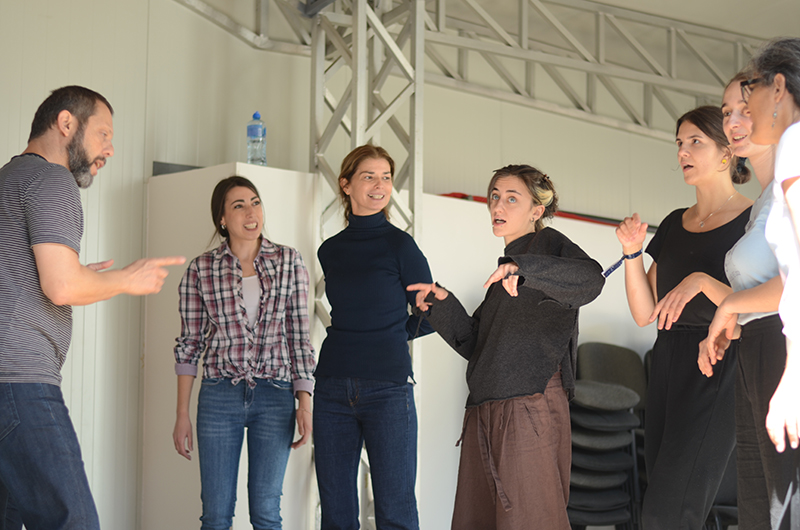
~~
Ana Vrbaški is a musician, singer, keyboardist, and theater performer. She has been an educator and a voice for the use of body music in education since 2013. She composes music for all ages and arranges traditional Balkan music. She also performs in theaters, festivals, and concerts with the duo Alice in WonderBand all over Europe. Ana is the mother of Vid (25) and Alisa (22) and lives on the outskirts of the national park Fruška gora in the north of Serbia. She practices yoga and believes in the unbreakable continuity of body and mind and the necessity of sustaining a strong and open-minded community that connects people no matter nation, religion, or any other difference.
Facebook: @AliceinWonderBandSerbia @telokaoinstrument
Instagram: @aliceinwonderband
Videos:
Concert at the first edition of the festival
Documentary of the festival’s first edition, Motions creating emotions
Ben Schuetz’s workshop, Rhythms of Argentina and Peru
Anna Llombart invites you to the second edition of the New Balkan Rhythm festival
Links:
Body music in Serbia, article of Ana Vrbaški
Article of the first Body Rhythm festival experience in 2018
